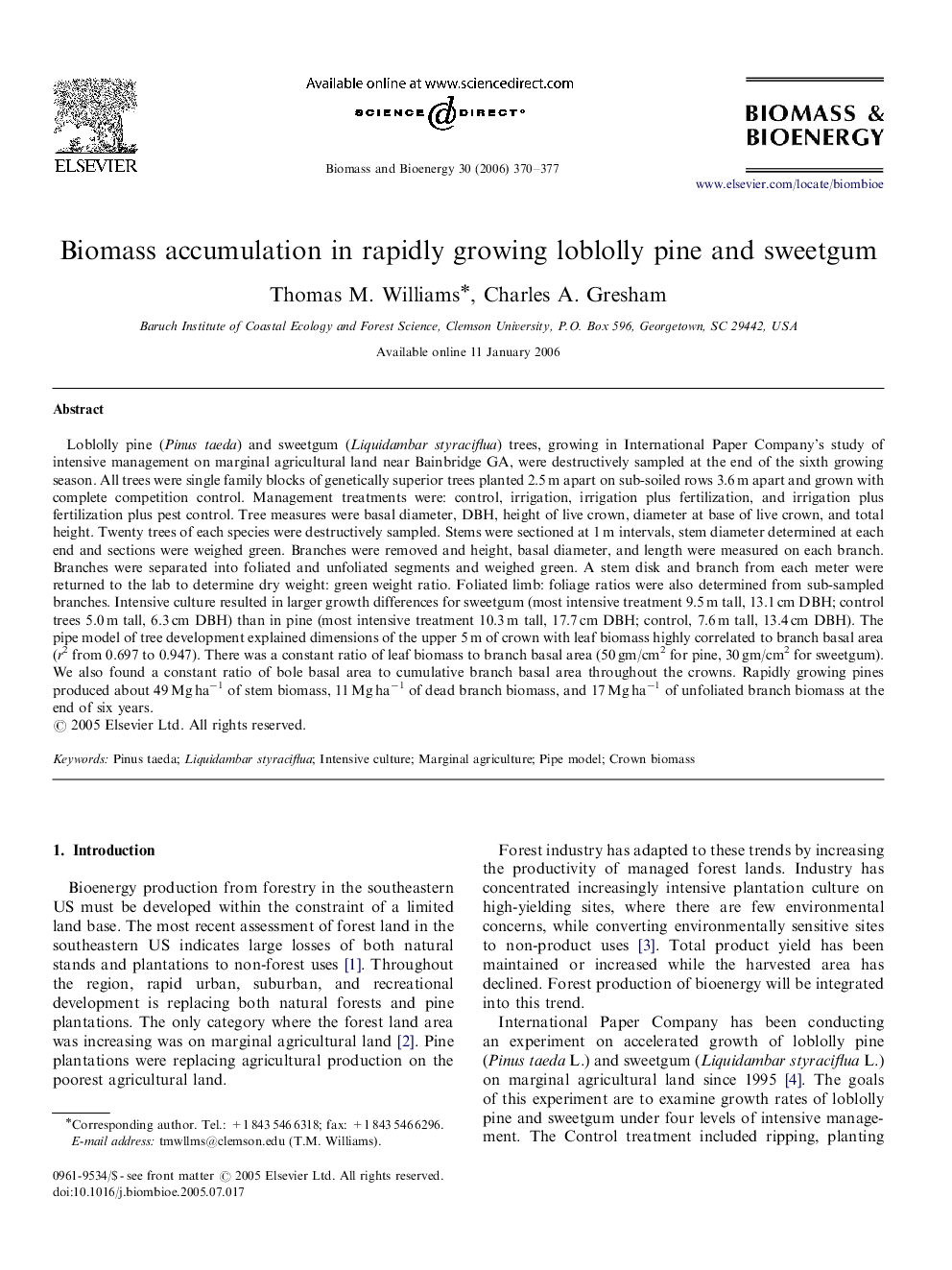| Article ID | Journal | Published Year | Pages | File Type |
|---|---|---|---|---|
| 678961 | Biomass and Bioenergy | 2006 | 8 Pages |
Loblolly pine (Pinus taeda) and sweetgum (Liquidambar styraciflua) trees, growing in International Paper Company's study of intensive management on marginal agricultural land near Bainbridge GA, were destructively sampled at the end of the sixth growing season. All trees were single family blocks of genetically superior trees planted 2.5 m apart on sub-soiled rows 3.6 m apart and grown with complete competition control. Management treatments were: control, irrigation, irrigation plus fertilization, and irrigation plus fertilization plus pest control. Tree measures were basal diameter, DBH, height of live crown, diameter at base of live crown, and total height. Twenty trees of each species were destructively sampled. Stems were sectioned at 1 m intervals, stem diameter determined at each end and sections were weighed green. Branches were removed and height, basal diameter, and length were measured on each branch. Branches were separated into foliated and unfoliated segments and weighed green. A stem disk and branch from each meter were returned to the lab to determine dry weight: green weight ratio. Foliated limb: foliage ratios were also determined from sub-sampled branches. Intensive culture resulted in larger growth differences for sweetgum (most intensive treatment 9.5 m tall, 13.1 cm DBH; control trees 5.0 m tall, 6.3 cm DBH) than in pine (most intensive treatment 10.3 m tall, 17.7 cm DBH; control, 7.6 m tall, 13.4 cm DBH). The pipe model of tree development explained dimensions of the upper 5 m of crown with leaf biomass highly correlated to branch basal area (r2 from 0.697 to 0.947). There was a constant ratio of leaf biomass to branch basal area (50 gm/cm2 for pine, 30 gm/cm2 for sweetgum). We also found a constant ratio of bole basal area to cumulative branch basal area throughout the crowns. Rapidly growing pines produced about 49 Mg ha−1 of stem biomass, 11 Mg ha−1 of dead branch biomass, and 17 Mg ha−1 of unfoliated branch biomass at the end of six years.
